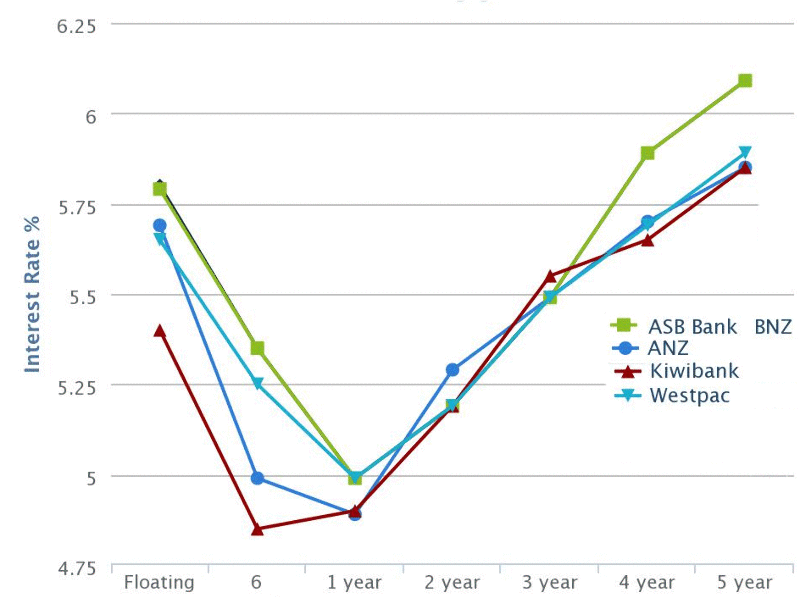ASB pulls pricing lever on home loans
ASB is cautiously navigating its way through the competitive and complex home loan market, the bank's chief executive Barbara Chapman says.
Wednesday, February 15th 2017, 7:26PM

Here we compare the five biggest banks standard, carded rates. Interestingly ASB and BNZ are nearly identical, except ASB's floating rate is one basis point higher than BNZ. Both banks are more expensive at the short and long end of the curve.
While ASB previously hadn't been aggressively chasing market share in the home loan market it has grown its book more than system growth in the 12 months to December 31.
In that time the book grew 11% compared to system growth of 9.1%.
Chapman said ASB was "navigating its way through the cycle cautiously".
Margins were coming down because of increased funding costs and the market remained highly competitive.
She added ASB was "not finding funding is a constraint. The money is available."
While there is strong demand for credit the bank was using pricing to ensure that it was achieving suitable margins. Currently, ASB has the highest standard main bank floating rate (see here).
Chapman said she was "slightly more comfortable with the margins" the bank was earning on home loans compared to previously.
However, ASB's overall cash net interest margin fell 17 basis points to 2.21%, due two two factors. One was the higher funding costs associated with wholesale funding and the other was increased costs relating to customers breaking fixed rate loans.
ASB accounts for breaks differently to other banks.
"As customers take advantage of the current low interest rate environment we are seeing a continued preference for lower margin fixed rate loans," Chapman said.
"At the same time, banks now are facing a changing dynamic around the increasing volume and cost of international funding needed to meet local lending requirements. With levels of local deposits failing to keep pace with the amount of lending banks are doing, the increased use of offshore funding has increased funding costs, reducing our net interest margin."
Chapman wouldn't disclose the difference in cost between funds raised locally and offshore, citing commercial sensitivity.
The bank's deposit book had grown by 5% in the 12-month period compared to a 10% increase in home loans.
KEY NUMBERS
Six months to December 31, 2016
- Cash Net Profit after tax $507 million +6% on corresponding period last year
- Cash Net Interest Rate margin down 17 basis points to 2.21%
- Home loan book up 11% to $76 billion
- Loan impairment expense up 20% to $49 million
- Costs held flat for second consecutive period
| « Banks to clamp down on cashbacks | Vincent Capital adds a South Island BDM » |
Special Offers
Comments from our readers
No comments yet
Sign In to add your comment
| Printable version | Email to a friend |



